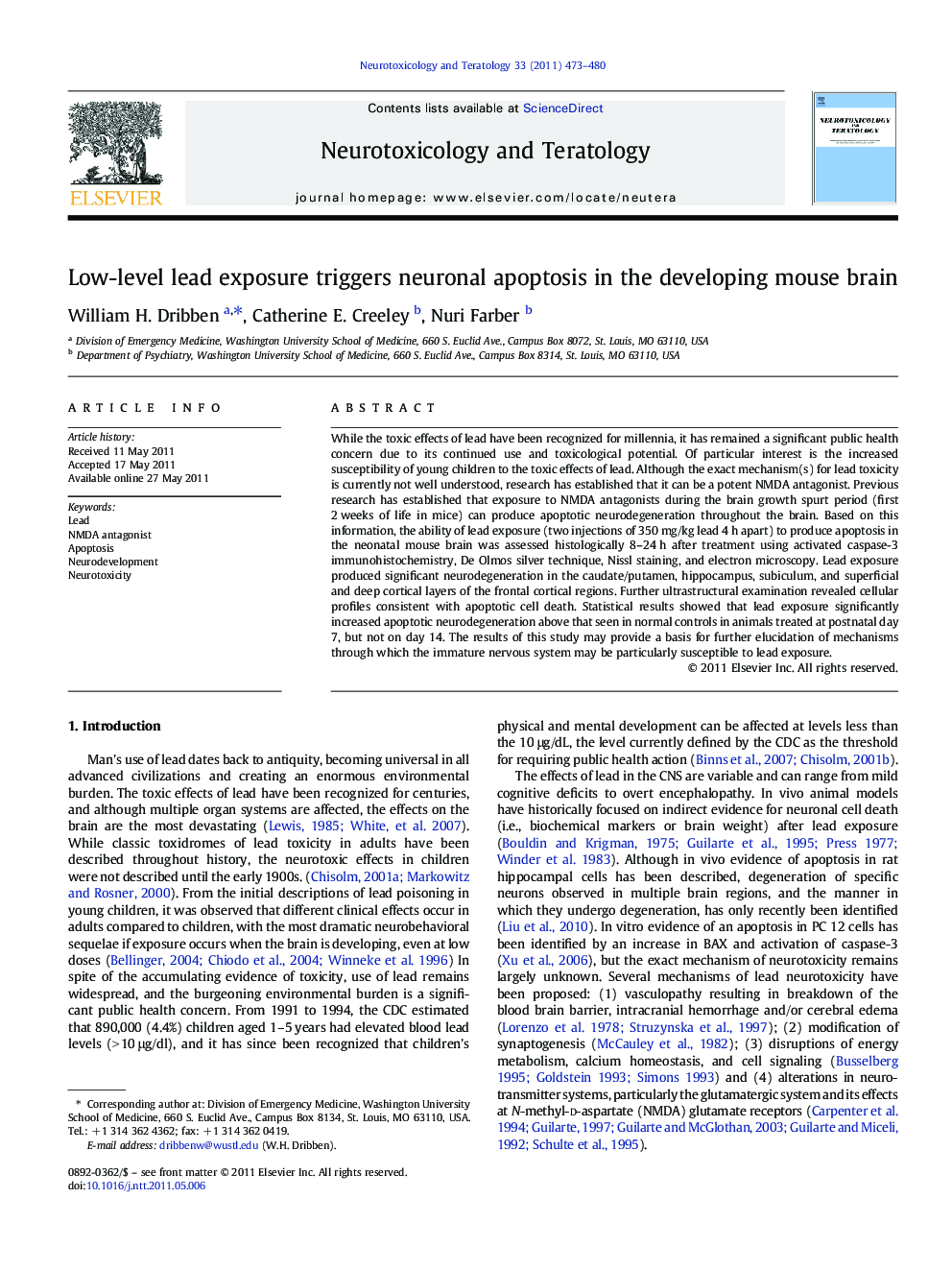| Article ID | Journal | Published Year | Pages | File Type |
|---|---|---|---|---|
| 2591335 | Neurotoxicology and Teratology | 2011 | 8 Pages |
While the toxic effects of lead have been recognized for millennia, it has remained a significant public health concern due to its continued use and toxicological potential. Of particular interest is the increased susceptibility of young children to the toxic effects of lead. Although the exact mechanism(s) for lead toxicity is currently not well understood, research has established that it can be a potent NMDA antagonist. Previous research has established that exposure to NMDA antagonists during the brain growth spurt period (first 2 weeks of life in mice) can produce apoptotic neurodegeneration throughout the brain. Based on this information, the ability of lead exposure (two injections of 350 mg/kg lead 4 h apart) to produce apoptosis in the neonatal mouse brain was assessed histologically 8–24 h after treatment using activated caspase-3 immunohistochemistry, De Olmos silver technique, Nissl staining, and electron microscopy. Lead exposure produced significant neurodegeneration in the caudate/putamen, hippocampus, subiculum, and superficial and deep cortical layers of the frontal cortical regions. Further ultrastructural examination revealed cellular profiles consistent with apoptotic cell death. Statistical results showed that lead exposure significantly increased apoptotic neurodegeneration above that seen in normal controls in animals treated at postnatal day 7, but not on day 14. The results of this study may provide a basis for further elucidation of mechanisms through which the immature nervous system may be particularly susceptible to lead exposure.
► Neurtoxicity can occur after exposure to lead in immature brains. ► Various histological techniques identified increased apoptosis in young mice. ► Caspase-3 is an immunohistochemical marker for apoptotic cell death. ► Damage was assessed by identifying activated caspase-3 positive neurons. ► Significant damage occurred in postnatal day 7 mice but was absent in day 14 mice.
